The gland of glands (The pituitary gland)

Fiver gig Sources listed below
When I was in medical school I had the opportunity to see a case of pituitary insufficiency. It is a rare case and it was by luck I met this patient. Some publishers say it has a 1 in 100,000 incidence but in Nigeria, it could be 1 in 200 million incidence because not only is this case rare, there is no way this patient would have been able to survive in a Nigerian facility. It's really possible that the patient may have been the only one with this condition in Nigeria but what do I know?
It was during my pediatric endocrinology clinic rotation. The girl who had the condition was a twin, what are the odds of seeing this case present this way? It was as if she was a study and she had a control to ensure that she was growing properly.
For those who are not medically inclined, I’ll start by explaining what the pituitary gland is, what it does and why it was amazing that this girl had a twin sister.
What is that behind your nose?
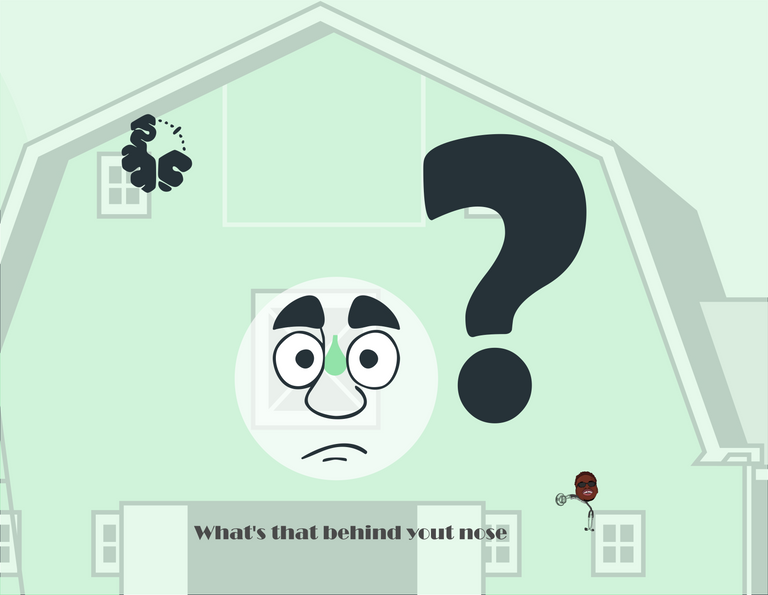
Fiver gig Sources listed below
Why, its your pituitary gland hanging off the diaphragm's sellae which separates the pituitary gland from the rest of the brain? The pituitary gland is actually a part of the brain and is connected to the brain midbrain by a bundle of blood vessels and nerves. These nerves and blood vessels are known as the infundibulum.
The pituitary gland has a special house that is made specifically for it and is known as the sella turcica. Which forms the base of the skull.
So if the skull were to be a house the sella turcica would be the base of this house and the pituitary would be living comfortably in the basement.
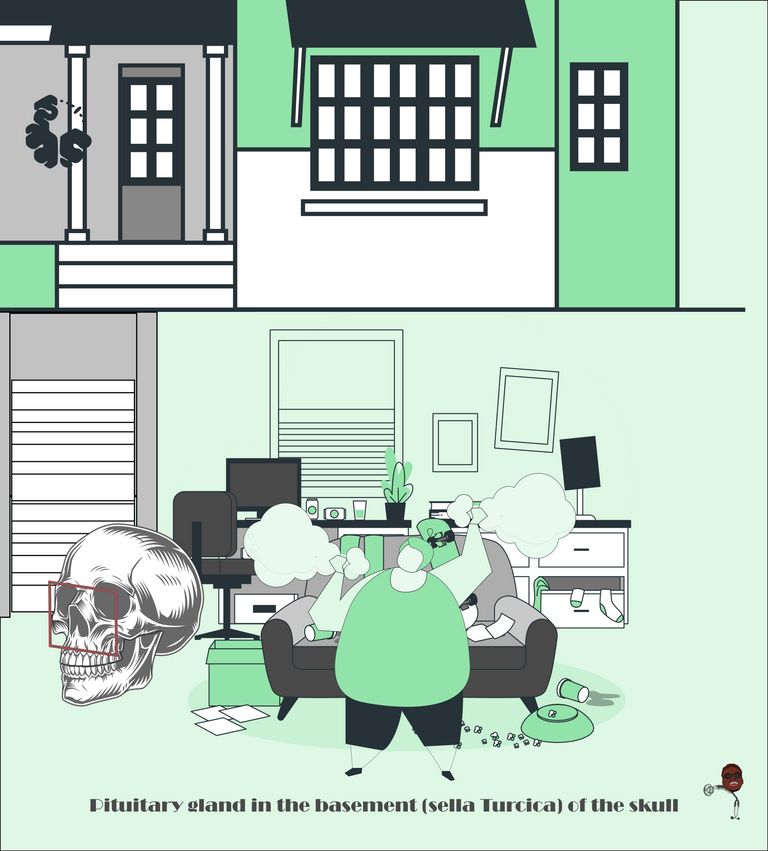
Fiver gig Sources listed below
The pituitary gland is an organ but it’s a gland
If you were a very good biology student then you must be wondering what the pituitary gland is in terms of organization… is it a cell, tissue or organ or a system on its own…If you were not a good biology student you’ll come to the end of this post and leave a comment that showed you didn’t read the post (if you don’t want to read the post you can just skip all the way to the end of the post and react the conclusion but beware of over SIMPLIFICATIONS).
Well for an organ that lives in the Brain’s house I have to say the pituitary really makes a case of not belonging. The pituitary gland is a part of the endocrine system and belongs to this system of secretory organs. The cells of the pituitary gland come together to form an endocrine gland.
Endocrine glands are part of the endocrine system as the name ENDOCRINE GLAND implies.
But what does it really mean, it means that it has cells that secrete directly in the bloodstream which is a different way of working when compared to EXOCRINE GLANDS that secrete on surfaces.
The exocrine glands are glands like the salivary gland, the sweat gland the lacrimal gland and the mammary gland that secrete saliva, sweat, tears and milk respectively.
The pituitary gland is the boss of all glands
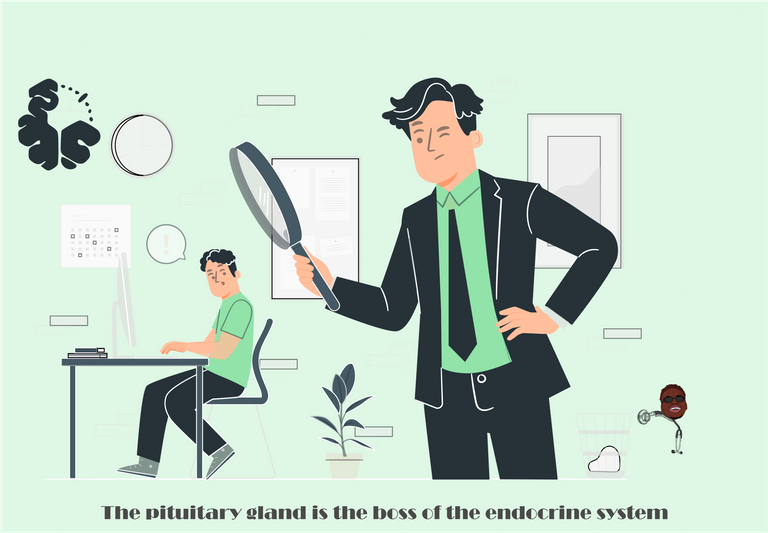
The pituitary gland tells all the other glands what to do and when every other gland should do it. It’s a good boss too because it gets feedback from the other glands (who are bosses on their own too).
The pituitary gland is made up of two parts, the front and the back in scientific lingo we call the anterior part and the posterior part.
The anterior or front part secrets hormones that tell the thyroid gland, the ovaries, the testis and other glands and tissue what to do.
The anterior pituitary can spit out 6 different hormones that affect growth rate, metabolism, reproductive function, the body's stress readiness and lactation.
| Hormone (this) | Meaning of this (what is the meaning of this) |
|---|---|
| Adrenocorticotropic hormone | hormone that controls the adrenal |
| Follicle stimulating hormone | hormone controlling the follicles of the ovaries |
| Growth hormone | causes growth of all cells |
| Luteinizing hormone | hormone that controls menstrual cycle alongside follicle stimulating hormone |
| Thyroid hormone | hormone that controls thyroid secretion |
| Prolactine | hormone that controls milk secretion |
The posterior or the back part of the pituitary gland secretes the love hormone also known as oxytocin and antidiuretic hormone which regulates the kidney's activities for the aficionados out there.
Biochemically, the molecules that are secreted as hormones are either proteins or steroids (lipids) When they are secreted they reach the target cells and are taken into the nucleus of the cell or within the cytoplasm. When these receptors are stimulated they begin to cause cellular activation of this receptor and these cells begin to act differently.
The Pituitary gland has a boss
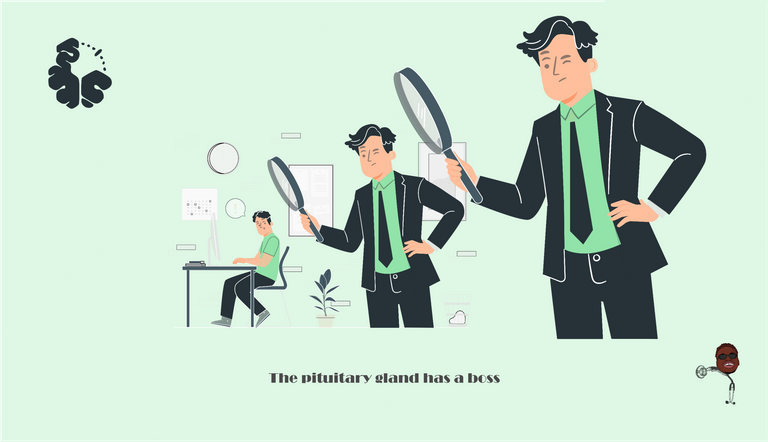
Fiver gig Sources listed below
The glads produced in the Anterior pituitary are closely controlled by the hypothalamus. The hypothalamus releases hormones that can make the hypothalamus secret its hormones. The hormones that the hypothalamus release are the growth hormone-releasing hormone, the corticotrophin-releasing hormone and the gonadotropin-releasing hormone, thyroid releasing hormone and the gonadotropin-releasing hormone.
PRL secretion is distinct from that of the other anterior pituitary hormones, being inhibited by hypothalamic dopamine. In addition, antidiuretic hormone (ADH) produced in the hypothalamus acts synergistically with CRH to promote ACTH release.
A negative feedback loop occurs such that the hormones produced in the target glands feedback to inhibit the release of their respective regulatory pituitary and hypothalamic factors. For example, hypothalamic TRH stimulates TSH release, which in turn stimulates the thyroid gland, resulting in increased serum levels of thyroxine (T4) and triiodothyronine (T3). When they have reached sufficient levels, T3 and T4 suppress TRH and TSH release.
The posterior pituitary consists of neural tissue that descends from the floor of the third ventricle. In contrast to the anterior pituitary hormones, the posterior pituitary hormones (ie,** ADH, oxytocin**) are synthesized by cell bodies in the hypothalamus and transported along the neurohypophyseal tract of the pituitary stalk. The release of these hormones occurs in response to neurohypophyseal stimuli.
Take prolactin for example is produced by the lactotrophs of the anterior pituitary gland. The molecule is a polypeptide meaning it is a proteinous molecule with many amino acids linked together.
These protein molecules are secreted into the bloodstream and are then taken to every cell of the body. They then act on receptors designated for this hormone.
The hormone rectors are found on the mammillary glands, the ovaries, the pituitary gland itself, the heart, the lungs and other parts of the body including parts of the brain.
When the hormone binds to a receptor it causes intracellular changes in the cells of the particular organ. The mammillary glands are found in the breast. When this hormone reaches the breast it causes the alveoli of the breast to grow. These alveoli are responsible for secreting and storing milk.
If you have been paying attention so far, congratulations for not being bored but if you are then you can scroll to the conclusion and just get the main gist of the post. If you have been paying attention then you can already see that this organ is very important and if it had an “insufficiency” then there would be a serious problem.
Pituitary Insufficiency

Fiver gig Sources listed below
This is a situation in which there is a lack of secretion of one or two of the important hormones that are usually secreted by the pituitary gland.
This condition comes in different varieties, for example, it could be the case where there is just one hormone absent and is not secreted, in that case, it is called an isolated pituitary deficiency, if there are multiple deficiencies it is called multiple pituitary hormone deficiencies, in this case there two or more of the hormones are affected and are noted to be deficient but not all of them. The third type of this disorder in this regard is called panhypopituitarism. Pan means that everything is affected, hypo means that it is reduced and pituitarism means that it affects the pituitary gland.
Pituitary insufficiency can also take place from outside the pituitary gland this is called secondary hypopituitarism and this happens when the hypothalamus is affected. The hypothalamus is sort of the boss of the pituitary gland and it is n organ in the brain.
In primary hypopituitarism, the defect is primarily from the pituitary gland.
The fourth type of this condition in this regard is idiopathic hypopituitarism and this is named idiopathic because nobody is sure why the affected person has pituitary insufficiency. The clinician would have checked everywhere and seen nothing wrong but the pituitary gland will simply not secrete the right amount of its hormones.
**Pituitary insufficiency or hypopituitarism can start at any point in a person’s life but this write-up will mostly focus on the congenital type which means it starts from birth.
**
When a starts from birth it is usually called congenital. Sometimes the patient may start having hypopituitarism from birth and it is called congenital hypopituitarism. All other forms are simply called non-congenital (acquired).
Causes
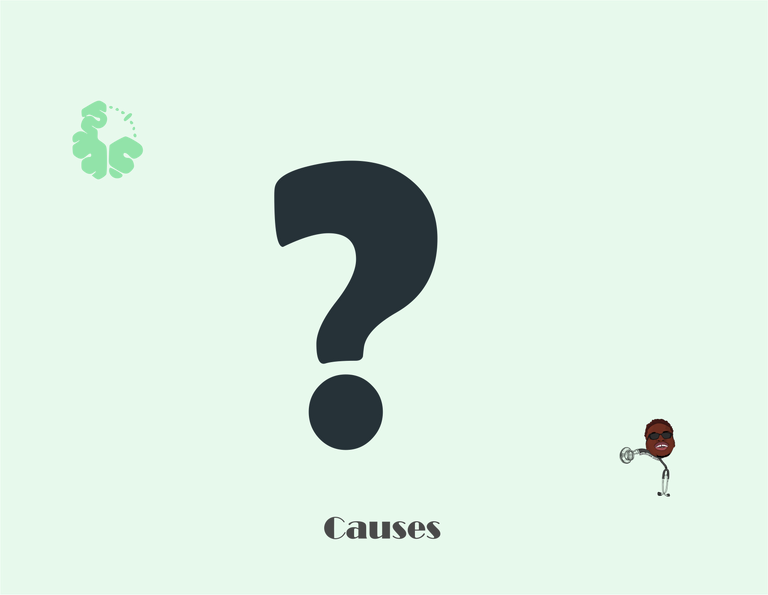
Fiver gig Sources listed below
The causes of pituitary insufficiency can be from different pathways, they all lead up to a broken pathway for making the hormones of the pituitary gland. When this takes place normal body function is affected and this will show in different abnormalities. Like if the growth hormone is reduced there will be dwarfism.
In the past, nobody thought genetics could be linked to pituitary abnormalities but today what we know is that some genes play a role in the normal formation of the pituitary gland and its hormones. This is especially the case for congenital pituitary insufficiency cases.
the pituitary transcription factor), there could be many genetic abnormalities but in a few cases, it might lead to just one hormone being affected.
Causes of genetic Pituitary insufficiency, broken pituitary stalk abnormally placed neurohypophysis or absent neurohypophysis, Pallister-Hall syndrome and genetic causes.
Demographics
Pituitary insufficiency is relatively rare with less than 3 cases in a million people being seen every year. Among the different isolated types, Growth hormone deficiency appears to be the most common. In the United States, it has been reported that about 1 child in about 3500 has this condition.
In Spain, it is thought to affect about 4 people out of 100 thousand every year.
In Nigeria, it is thought to affect 3 people per million according to a study done by Ekiti State University.
How do you know?

Fiver gig Sources listed below
There are ways doctors are able to tell that a patient is suffering from this condition. For congenital cases, it is easy to miss. In some facilities, they do a blood test for hormones and try to find out if they are at normal levels in neonates. But for children, teenagers and adults it's not clear cut but the features typically get worse.
The features seen in this condition vary depending on the absent hormone and how bad the condition is.
Here are some of those features based on the hormone:
| Deficient Hormone | Effect |
|---|---|
| Growth hormone | Childhood short stature, poor growth Adults tiredness, poor muscle strength |
| Luteinizing Hormone | Women poor menstruation and fertility problems MenFertility problems and lack of sex drive |
| Thyroid hormone | tiredness, weight gain, cold intolerance, poor skin moisturization |
| Luteinizing hormone | hormone that controls menstrual cycle alongside follicle stimulating hormone |
| Adrenocorticotropic hormone (ACTH) | tiredness, fainting spells, infections, abdominal features |
| Prolactine | issues with milk secretion |
| Anti-diuretic hormone | too much thirst, too much hunger, too much urination |
The patient we saw had a deficiency in multiple hormones from the pituitary gland and had significant features like she was shorter than her twin sister because of growth hormone secretion and she was to receive other hormones that were not sufficiently produced as she aged to ensure sexual maturity.
In conclusion
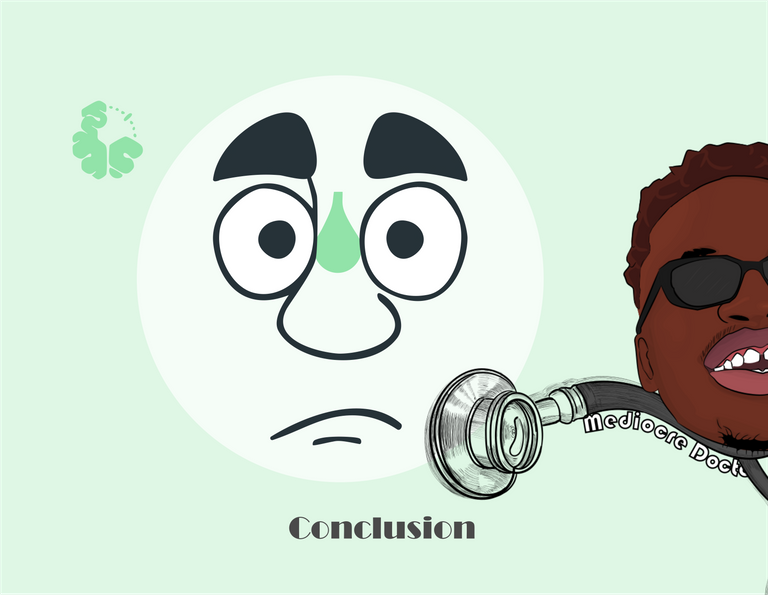
Fiver gig Sources listed below
The pituitary gland is arguably the most important organ in the endocrine system and its secretions directly control the secretions of the body.
It is located in the sella turcica of the skull and is oval. It has two parts the Anterior (or front) part and the posterior (back) part. The anterior part produces and secrets the endocrine hormones that control endocrine function.
Question
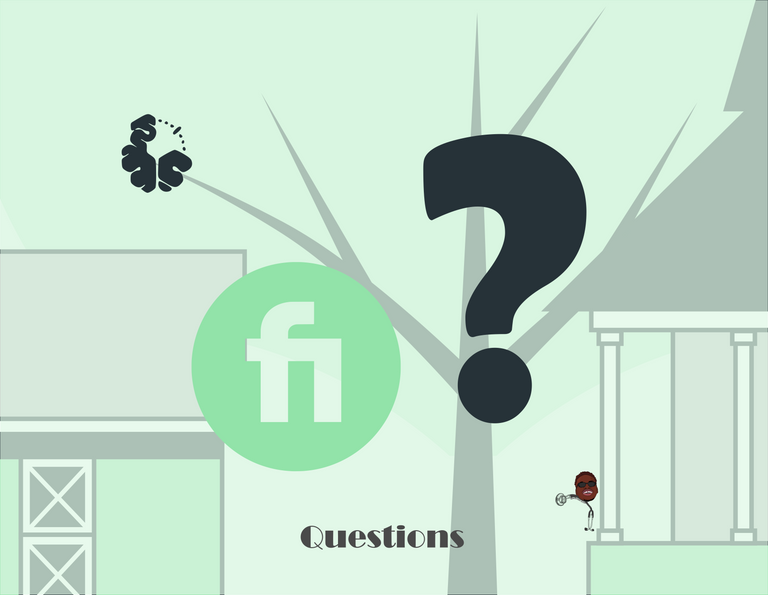
Fiver gig Sources listed below
- Why was it important that the girl in the clinical case had a twin sister?
- What would we do without the Pituitary gland, how long would a baby survive?
- What could happen if the pituitary gland oversecreted its hormone?
Growth hormone (GH) deficiency
In children, GH deficiency may cause growth problems and short stature. Most adults who have GH deficiency don't have any symptoms, but for some adults, it can cause?
DISCLAIMER: Medical History was fictional and none of the information here is medical advice
References

Fiver gig Sources listed below
Image sources
Image by storyset on Freepik
Image by rawpixel.com on Freepik
Image by dgim-studio on Freepik
Image by brgfx on Freepik
Thanks for your contribution to the STEMsocial community. Feel free to join us on discord to get to know the rest of us!
Please consider delegating to the @stemsocial account (85% of the curation rewards are returned).
You may also include @stemsocial as a beneficiary of the rewards of this post to get a stronger support.
An interesting summary of the boss of all glands. I enjoyed the read.
I am glad you did. The next post is going to be very interesting
I'll be anticipating it
Thank you!